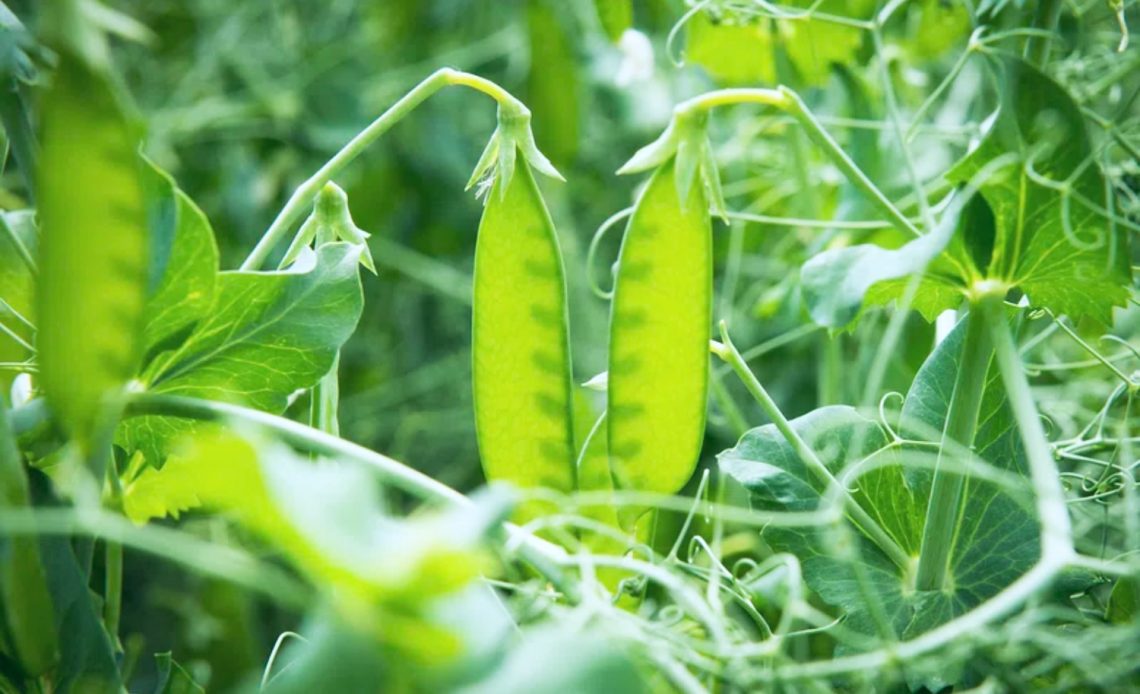

We’re here to help! Wild Yards is a completely free website that is 100% dedicated to helping you create a wildlife-friendly, sustainable yard. Read more
WildYards is reader-supported. When you buy a product through a link on our site, we may earn a comission. Every product is independently selected by our (obsessive) editors and our reviews are unbiased and objective. Read more about our mission or our privacy policy.
Pea plants are prolific producers (say that five times fast).
But did you know that the plants you grow near your peas can actually boost crop production? It’s true!
If you want to grow more peas within the same space without growing more pea plants, simply keeping the proper companions nearby can significantly improve yield.
Of course, there are plants that can hinder pea production as well. Keeping these plants on the opposite side of your garden will also help keep your pea crop healthy.
So just what are the best pea companion plants, and which plants should you keep far away?
Corn can be grown next to peas to create a natural trellis. Low-growing plants like beets, turnips, radishes, and lettuce also work well as companions. But alliums, like garlic and onions, should be kept away from your pea crop.
25 Best companion plants for peas
The average pea plant can produce 20 to 30 pods in a season.
When grown next to their favorite companions, plants have the potential to maximize their growth.
So as you sit down to plan the layout of your garden for the upcoming season, keep these 25 pea companion plants in mind.
Radishes
Peas grow relatively slowly, producing their first pods 50 to 60 days after germination.
But radishes mature quickly and are ready to be harvested around 28 days after germination. They’re usually in and out of the ground before peas even begin flowering!
The radish’s accelerated lifecycle makes it an ideal companion plant for peas and allows you to make the most of the space in your garden.
Plant radishes in rows on either side of your pea crop. By the time your peas need the extra space, your radishes will already be gone.
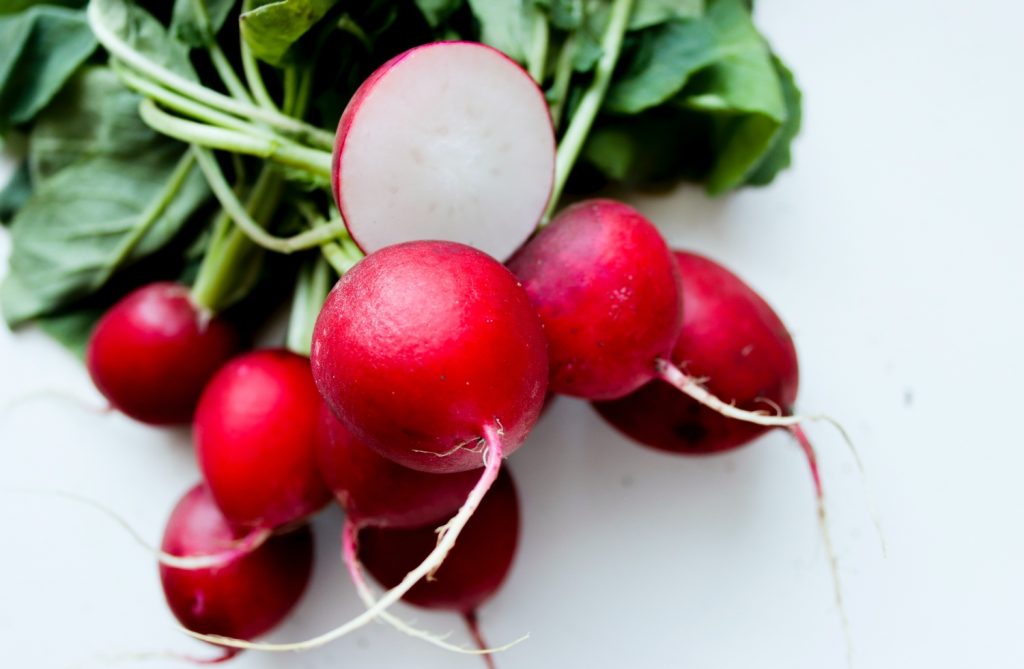
Potatoes
If you’re looking for companion plants for peas, potatoes are another nightshade that works well.
Potatoes rely on high doses of nitrogen to grow and potato plants benefit from the extra nitrogen that peas add to the soil.
If you’ve ever grown peas, you know how critical loose, cool, moist soil is to crop production.
As root vegetables, potatoes help break up the soil, preventing compaction and making it easier for pea plants to take root.
Potato plants also help keep the soil moist and cool thanks to their leafy foliage.
Growing your potato crop near your peas improves soil conditions, making it easier for your pea plants to stay healthy.
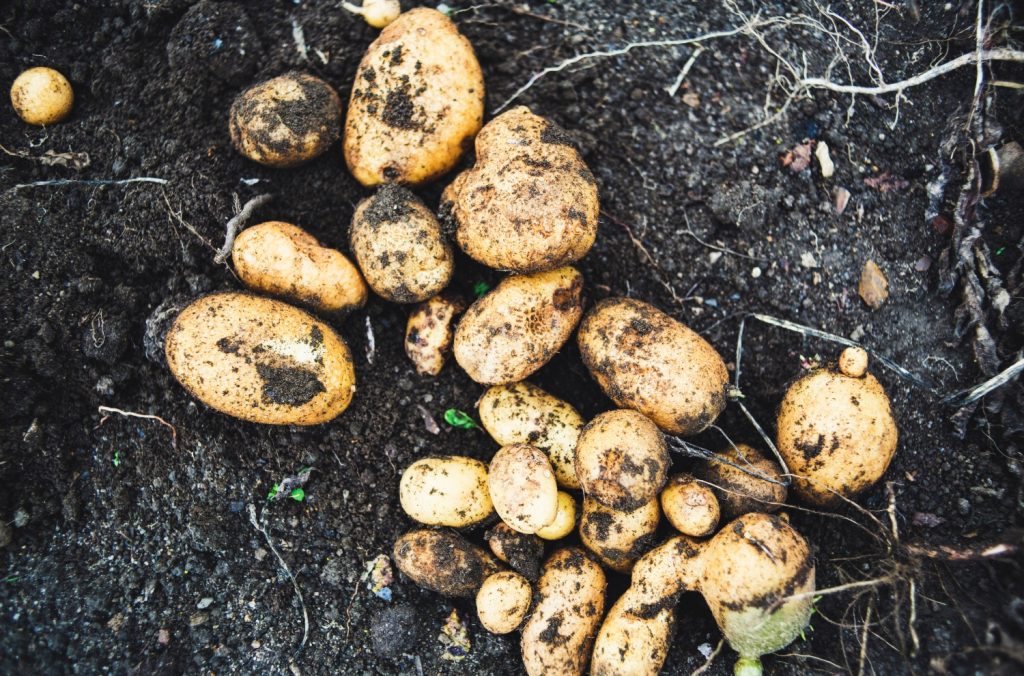
Borage
Borage makes a great companion for so many garden favorites. This edible plant produces purple to blue star-shaped flowers that pollinators can’t resist.
Borage has been shown to boost pollination rates in strawberry gardens and can produce similar effects for peas, too.
Bees, butterflies, and beetles enjoy visiting borage flowers. Use borage to attract more of these beneficial insects to your pea crop.
Celery
Celery can be used as a companion plant for peas because its potent smell helps deter unwanted pests.
Aphids, mites, thrips, and other tiny bugs that like to prey on peas will be less inclined to visit your garden with celery growing nearby.
Celery benefits from being grown near peas, too.
Peas are legumes, and like all other legumes, they’re also nitrogen fixers.
This means that peas take the nitrogen that’s already in the soil and make it more bioavailable for the other plants in your garden.
Since plants rely on nitrogen to produce healthy green foliage, growing nitrogen-fixers, like peas, near plants that are grown for their foliage, like celery, can improve the latter’s performance.
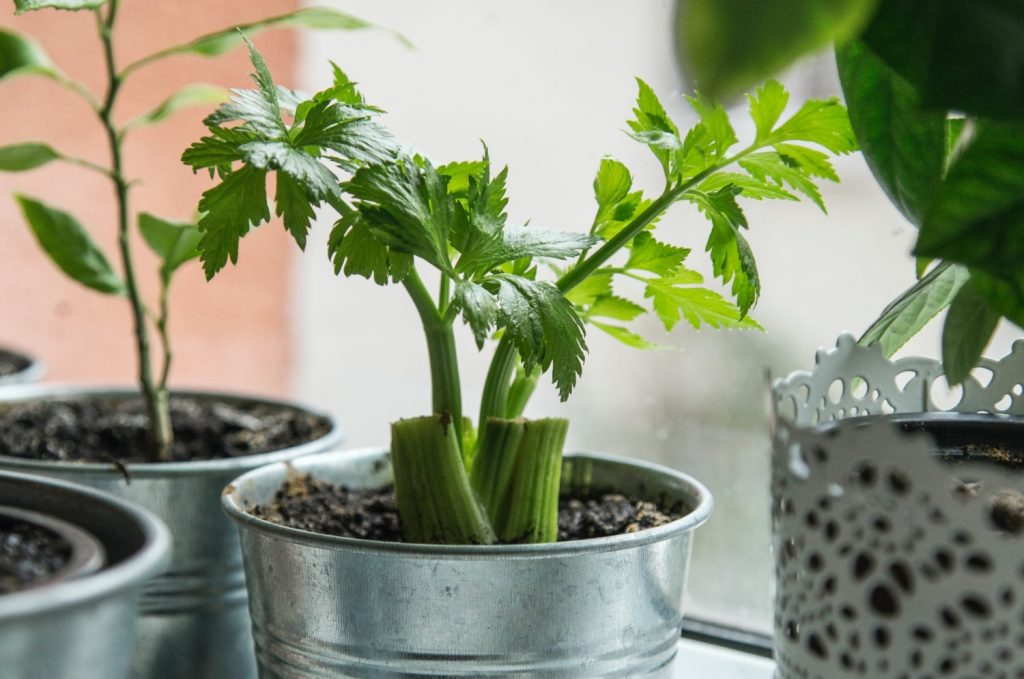
Peppers
Pea plants get along well with nightshade veggies. That’s because, like celery, nightshades tend to have higher nitrogen needs.
Pepper plants grow best in nitrogen-rich soils. Whether you grow jalapenos, habaneros, bell peppers, or poblanos, your pepper plants will stay healthier when planted next to peas
And your pea plants will benefit from the arrangement as well.
Pepper plants naturally repel insects like aphids. That’s not to say that pepper plants can prevent all insect infestations.
You may find at times you still need to apply a homemade insecticide to the plants in your garden.
However, growing your peppers near your peas is an easy precaution against unwanted bugs.
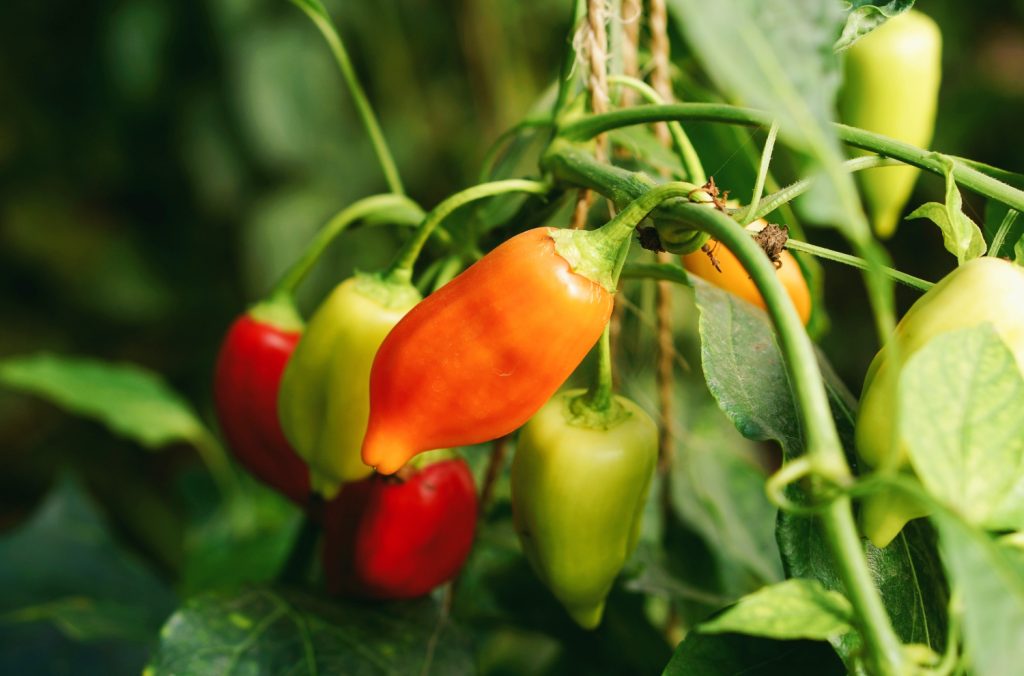
Tomatoes
If you’re not a fan of peppers, then why not grow tomatoes next to your peas, instead?
There are loads of delicious tomato varieties to choose from, ranging from the classic red Beef Steak to the deep purple Black Beauty.
Regardless of which tomato cultivars you choose for your garden, these nightshade veggies will grow best when planted near your pea crop.
Peas give tomato plants a boost of nitrogen that supports healthy growth.
Meanwhile, tomatoes provide pea plants with some protection from the elements, and their pungent foliage wards off damaging pests, like aphids.
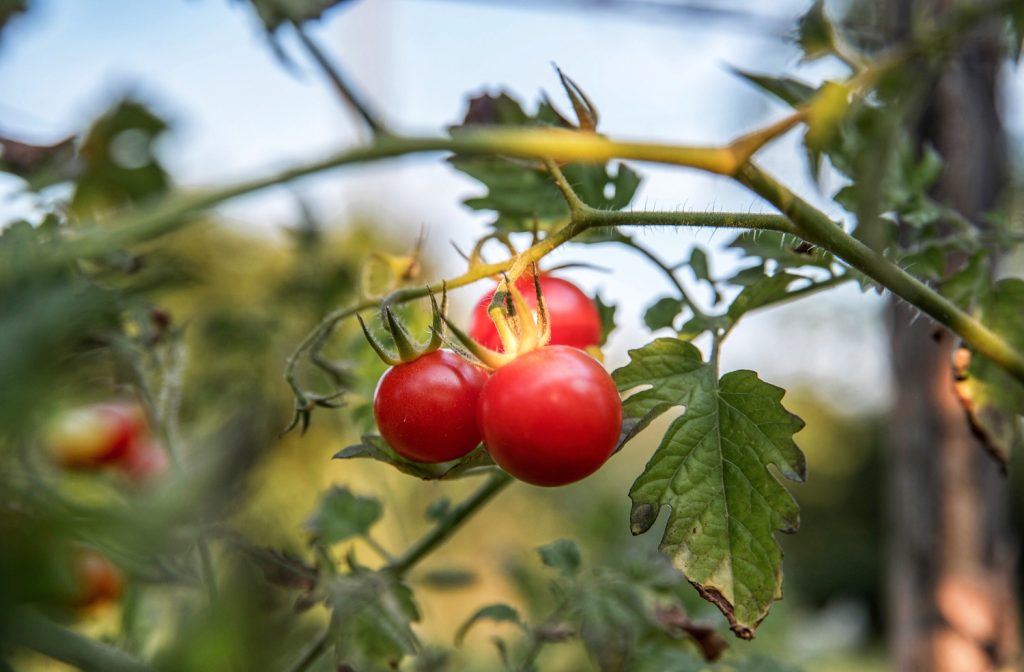
Cilantro
Your pea crop is prime real estate for tiny insects, who not only enjoy boring holes into the plants’ pods but can also easily hide from predators amongst their foliage.
Sometimes, you only notice an insect infestation in your pea crop when it’s too late.
If you’ve struggled in the past to produce a pea crop worth eating due to damaging insects, try growing some cilantro nearby.
Cilantro has a powerful taste and smell. So powerful that many people are repelled by it.
If cilantro has the power to keep people away, it certainly has the power to keep those annoying bugs away, too.
Cilantro grows fast and produces dense foliage when planted next to nitrogen-fixers like peas.
Plus, cilantro’s relatively low-growing nature means plants will never interfere with your pea crop’s growth.
Beets
Like radishes, beets make some of the best pea companion plants.
Beets are root vegetables that grow close to the ground. They never grow tall enough to snuff out surrounding pea plants.
Your beet plants will enjoy the burst of nitrogen your pea crop provides them.
Both beets and peas grow best in cool weather, and because they can be grown in close proximity while still allowing for great airflow, they’re the perfect companion for early spring and fall gardens alike.
For best results, leave 10” to 12” between your beet crop and your pea crop. This way, plants can enjoy good air circulation without risking the spread of fungal diseases.
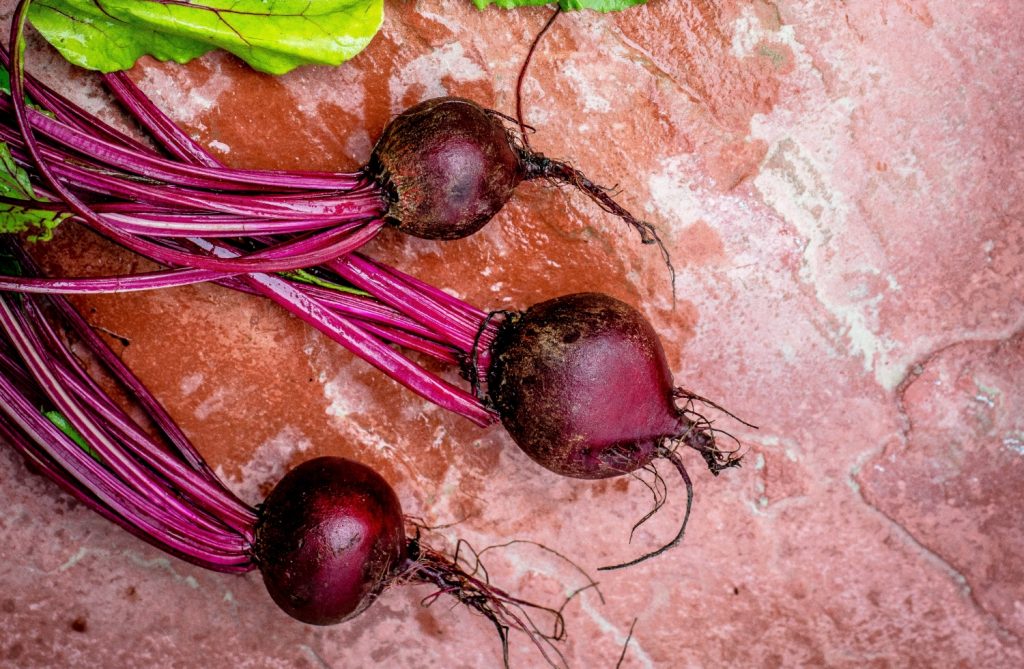
Spinach
A nutritious leafy green, spinach is a great addition to any cool-weather garden. Plants produce the tenderest, tastiest leaves in spring and fall when temperatures are mild.
Growing spinach near your pea plants provides their foliage with protection from the elements, keeping the leaves cool during the hottest part of the day, and protected from strong wind gusts.
Spinach grows much faster in the presence of a nitrogen-fixer, like peas.
Planting your pea crop near your spinach plants provides spinach with the extra nutrients the plants need to produce dense foliage, so you have more leaves to harvest and bring to your table.
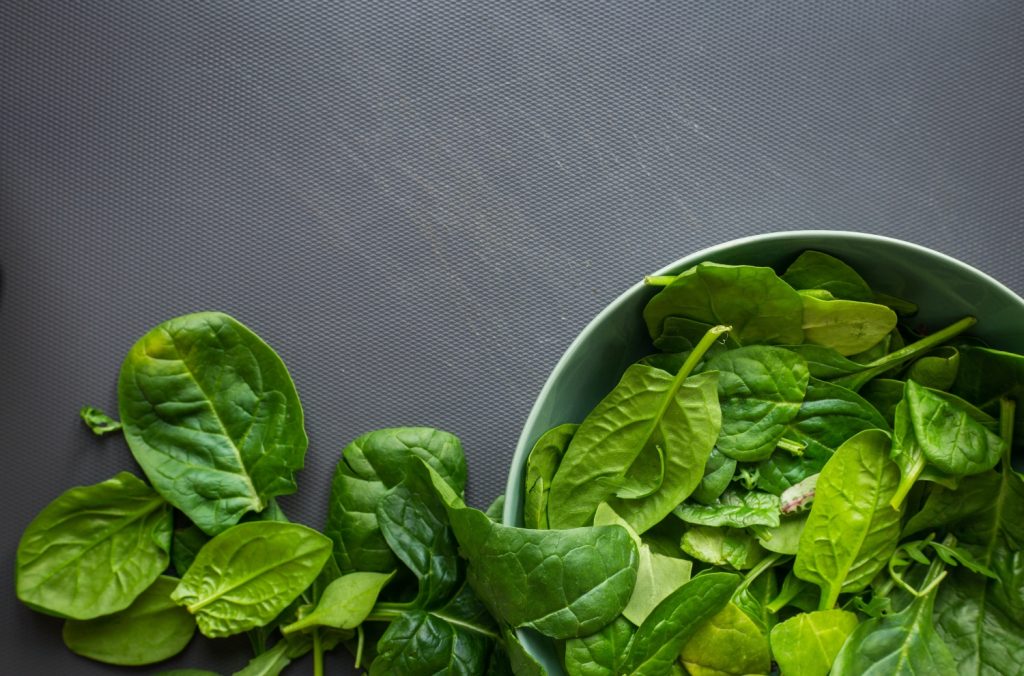
Mint
Peas love growing near mint. Not only does this fragrant herb help repel pesky insects, but it can also be used as a living mulch.
Mint’s dense foliage creates a thick carpet over the soil surface, shielding it from sunlight.
This helps your pea crop stay cool and hydrated so plants can continue producing throughout the season.
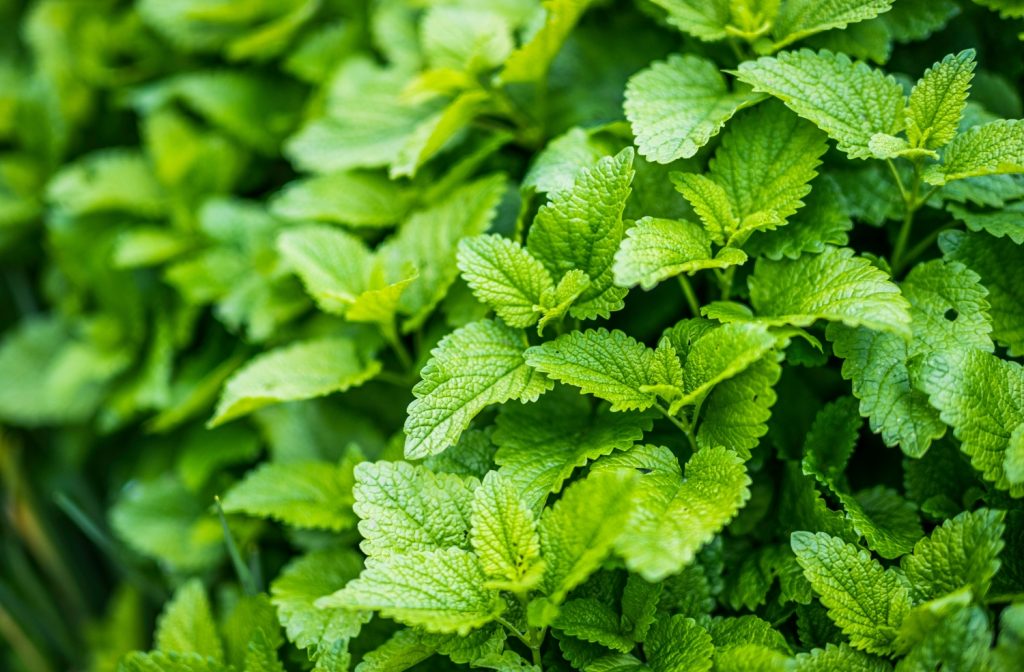
Broccoli
If your broccoli crop has been underperforming in recent years, it could be that the plants aren’t getting enough nitrogen.
Broccoli plants require high doses of nitrogen to produce healthy green flower heads.
Without adequate nitrogen, your broccoli crop may fail to mature. If the plants do produce heads, they may be smaller than normal and have poor taste and texture.
An easy way to remedy this problem is to use broccoli as a pea companion plant.
Broccoli protects the soil for pea plants, so plants don’t get overheated.
Meanwhile, peas increase soil nitrogen levels, boosting the availability of this nutrient so broccoli can flower optimally.
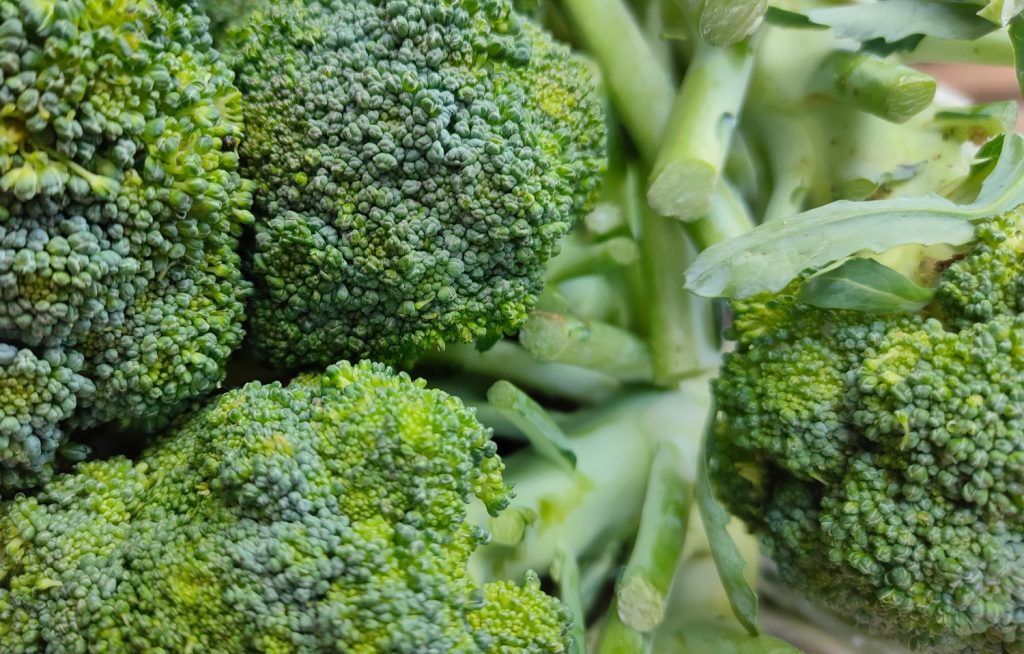
Corn
Peas and corn are a classic combination, both in the kitchen and in the garden.
Because corn has high nitrogen needs, your crop will perform best when grown near peas.
Keeping your peas near your corn has the added benefit of providing the peas with a natural trellis for them to latch onto as they grow.
Peas are planted when the weather is cool, but corn isn’t sown until the soil heats up. Even though you’ll have to stagger their start dates, corn grows so quickly that it will soon catch up with the peas.
When you’re ready to plant your corn crop, simply sow the seeds directly in your pea patch.
This allows you to save on space, and the plants will enjoy all of the benefits of companionship without competing with each other.
Nasturtiums
There are three reasons why nasturtiums make for one of the best pea companion plants out there.
The first is that nasturtiums produce scads of vibrant flowers that help attract bees, butterflies, beetles, and other beneficial pollinators to your garden.
These pollinators will be all too happy to visit your pea crop as well, and the better your peas are pollinated, the more pods you’ll have come harvest time.
The second benefit that nasturtiums have to offer is that they attract predatory insects, like ladybugs, lacewings, and parasitic wasps.
These bugs prey on small bugs like aphids and thrips, before these pests get a chance to destroy your crops.
Lastly, nasturtiums can be used as a trap crop.
It may seem counterintuitive to provide aphids, thrips, and mites with a food source. But growing nasturtiums as a plant sacrifice gives these pests something else to feed on, sparing your valuable crops.
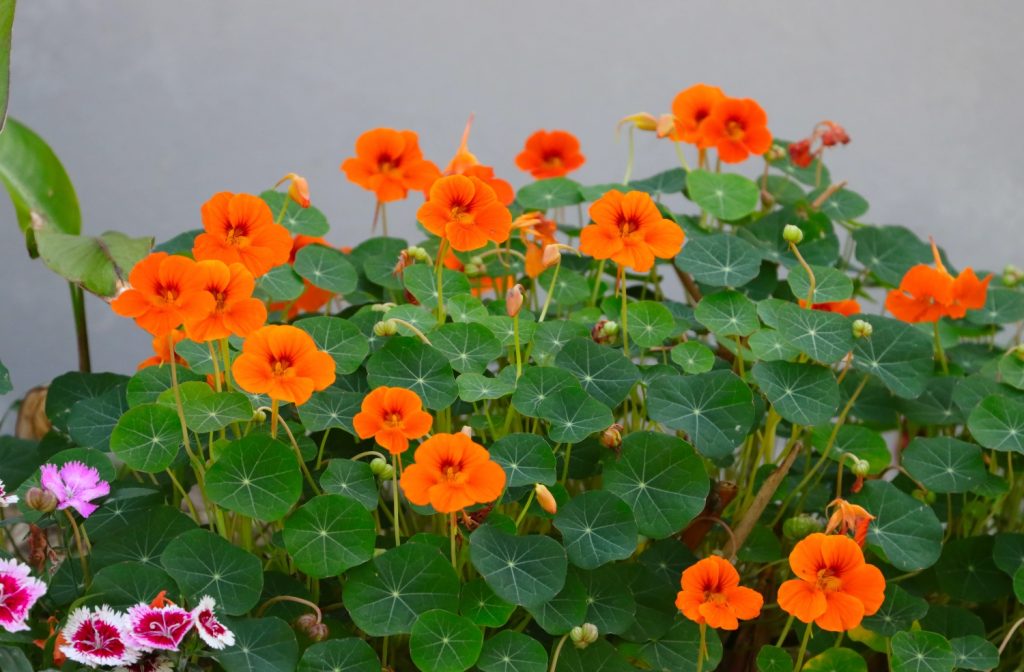
Turnips
Like so many plants, turnips benefit greatly from the added dose of nitrogen that peas give the soil.
Planting peas near your turnip crop is an easy way to grow larger, healthier, better-tasting turnips.
Meanwhile, turnips help repel aphids thanks to their pungent odor.
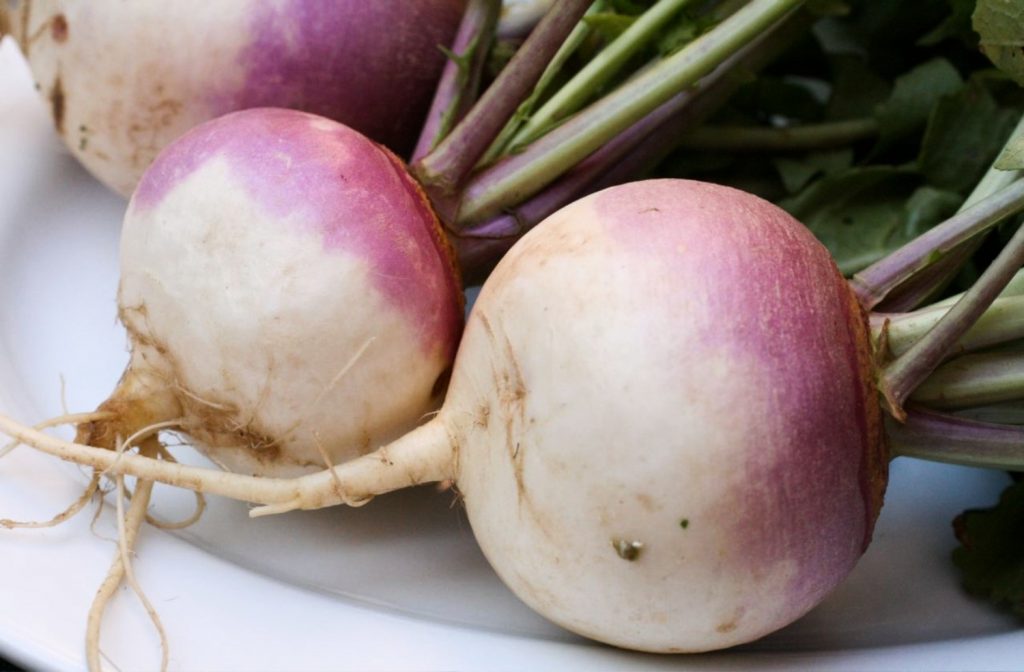
Parsley
Hoverflies and predatory wasps are attracted to parsley. Using parsley as a companion plant for peas is a simple way to keep pest levels down naturally.
Parsley acts as a ground cover for peas, sealing moisture into the soil where your pea crop can make good use of it.
Because parsley is so short compared to peas, the plants will never compete with each other.
After your peas have been harvested, you can continue collecting bundles of parsley and use the space where your peas were growing to plant something else.
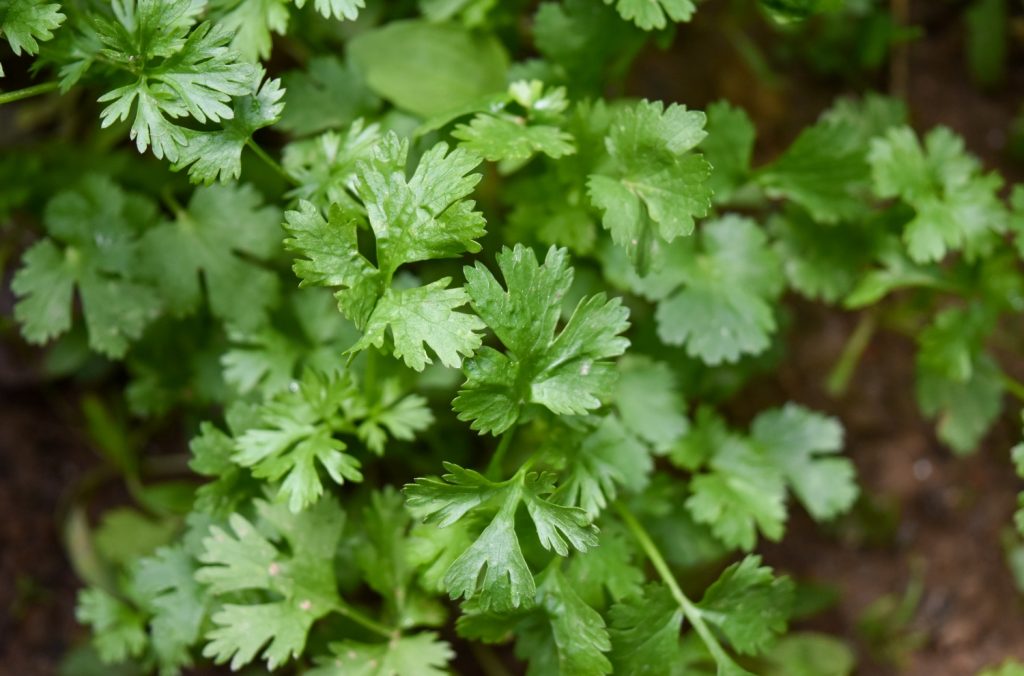
Beans
You can grow your pea crop right alongside your favorite beans if you’d like to grow both within the same row.
Beans and peas share the same light, soil, and water requirements.
They also share the same nutrient requirements, so both types of plants can be fertilized the same way, making care and maintenance easier.
When grown together within the same row, beans and peas can share a trellis, allowing you to save space in your garden beds.
Eggplants
From vegetable lasagna to eggplant parmesan, these easy-growing vegetables are much more versatile than we give them credit for.
If you’re a fan of eggplant, and you want to maximize your harvest, growing peas nearby can help you do just that.
As nightshades, eggplants naturally benefit from being planted near peas.
Peas provide eggplants with a dose of nitrogen that helps them kickstart healthy growth and produce loads of healthy fruits.
One thing to note is that eggplants need a minimum of 6 hours of sunlight per day.
For this reason, you’ll need to make sure to keep your eggplant crop on the sunniest side of your peas. Otherwise, they may get too much shade.
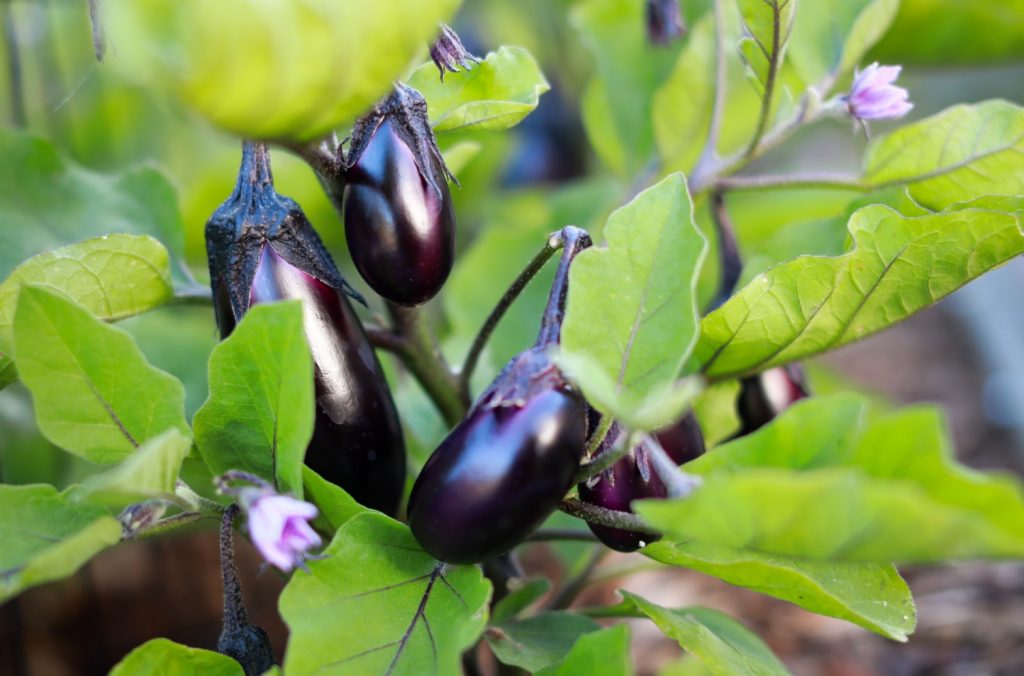
Carrots
Carrots are another low-growing crop that can be planted near peas without competing with them for space.
Pea plants produce relatively shallow root systems. But carrots grow long taproots, allowing them to access nutrients deeper in the soil without robbing peas of essential vitamins and minerals.
As heavy nitrogen users, carrots grow best in the presence of peas. The roots themselves tend to be thicker, crisper, and better-tasting.
It’s worth noting, too, that carrots share the same soil requirements as peas, thriving in loose, loamy, soils that drain well but can easily be kept moist.
Peas and carrots benefit from organic fertilizers, like manure and compost, as well as organic mulches.
Since carrots grow best in mild weather, they perform best when planted on the shady side of peas, where they can stay nice and cool.
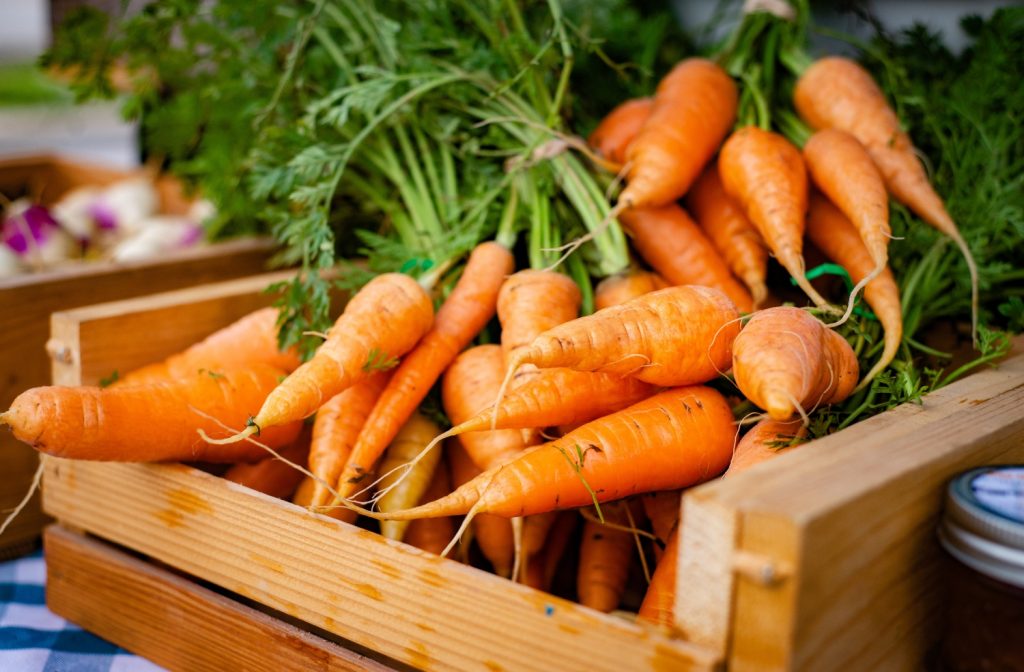
Romaine lettuce
Peas and romaine lettuce are a match made in heaven. Keeping these two plants together allows you to maximize your garden’s space.
Both plants share the same light and soil requirements, and both plants grow best in mild temperatures.
As the lettuce heads spread out, they cover the soil, protecting it from the sun’s harsh rays.
This allows the soil to retain more moisture and stay cooler, which benefits both of these plants.
Peas provide romaine lettuce with some extra shade during the hottest part of the day, allowing the lettuce to produce crisper, sweeter foliage.
Additionally, romaine lettuce thrives with the extra nitrogen peas provide them with. Plants produce much more quickly, giving you more foliage to harvest.
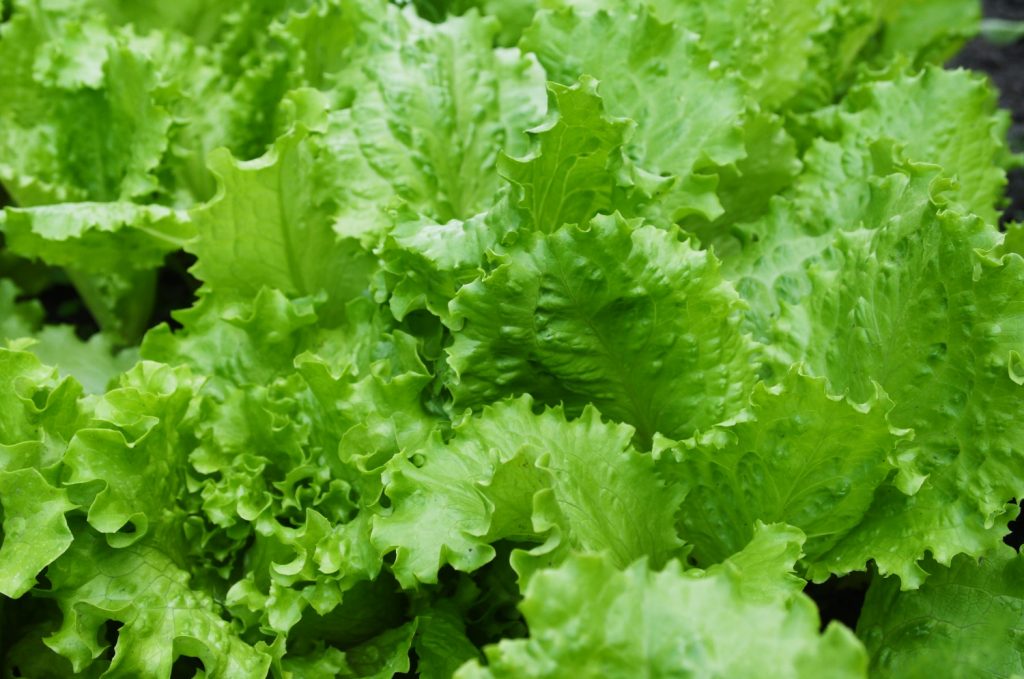
Cauliflower
Cauliflower is a popular choice for cool-weather gardens. These cruciferous veggies are some of the best companion plants for peas because they help regulate soil temperature.
As cauliflower heads develop, the plant’s foliage spreads out. The cauliflower’s low-growing nature means plants never threaten to take over towering pea plants.
But because the cauliflower’s foliage covers the soil, it helps the soil stay much cooler, allowing pea plants to grow even better.
Cauliflower helps the soil stay moist as well, so you can go longer in between waterings and cut down on your water bill.
Basil
Delicious to humans and repulsive to most pests, growing basil as a pea companion plant is a no-brainer.
Basil shares the same growing requirements as pea plants, growing best in cool weather and in damp, loose soil.
Basil’s pungent foliage repels aphids, thrips, and the like, while the plant’s tall white flowers attract all of the right bugs.
Ladybugs, butterflies, and bees enjoy pollinating basil plants, and you can use basil to attract more of these helpful insects to your pea plants.
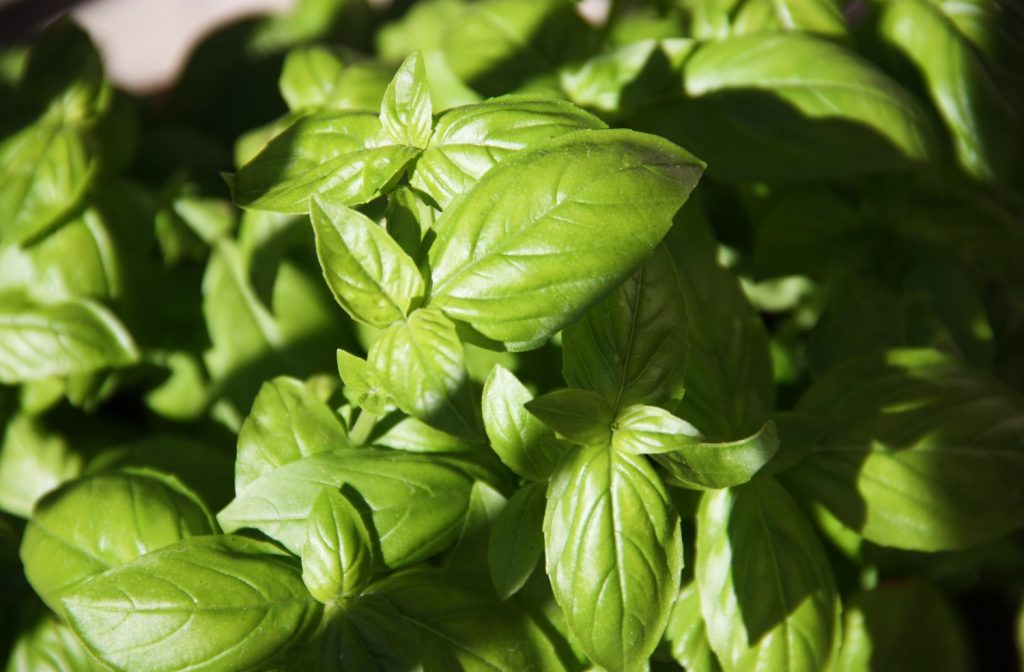
Cucumbers
Peas grow upward, and can easily be trained to climb a trellis to free up ground space in your garden.
This leaves plenty of room for other plants, like cucumbers, to grow. The broad leaves of the cucumber plant protect the soil from rapid water loss, keeping the ground moist and cool, just the way your pea plants like it.
Cucumbers benefit from being planted near peas, too. Cucumbers thrive in nitrogen-rich soils and can produce many more fruits thanks to the added dose of nutrients.
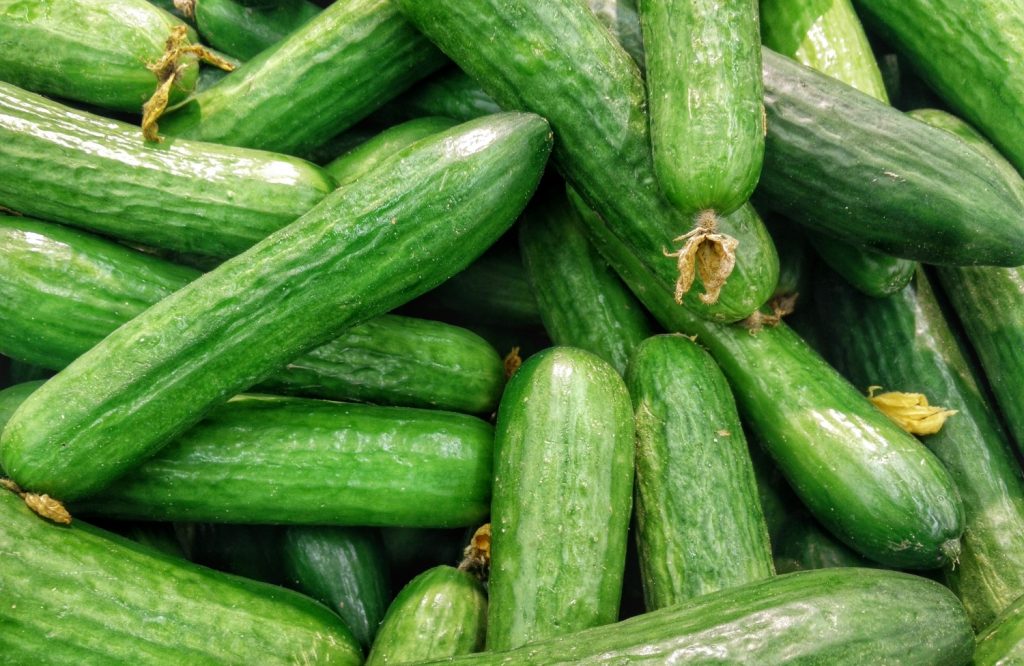
Marigolds
Many gardeners grow marigolds as a border around their garden beds. These yellow and orange flowers work wonders in natural pest control.
See, marigolds have a distinctive smell. Their fragrance is so potent that it wards off pesky critters, including aphids, thrips, and other small insects.
In spite of their unpleasant aroma, marigolds can attract beneficial pollinators.
Bees and butterflies are drawn to marigolds, and they can help boost pea crop production.
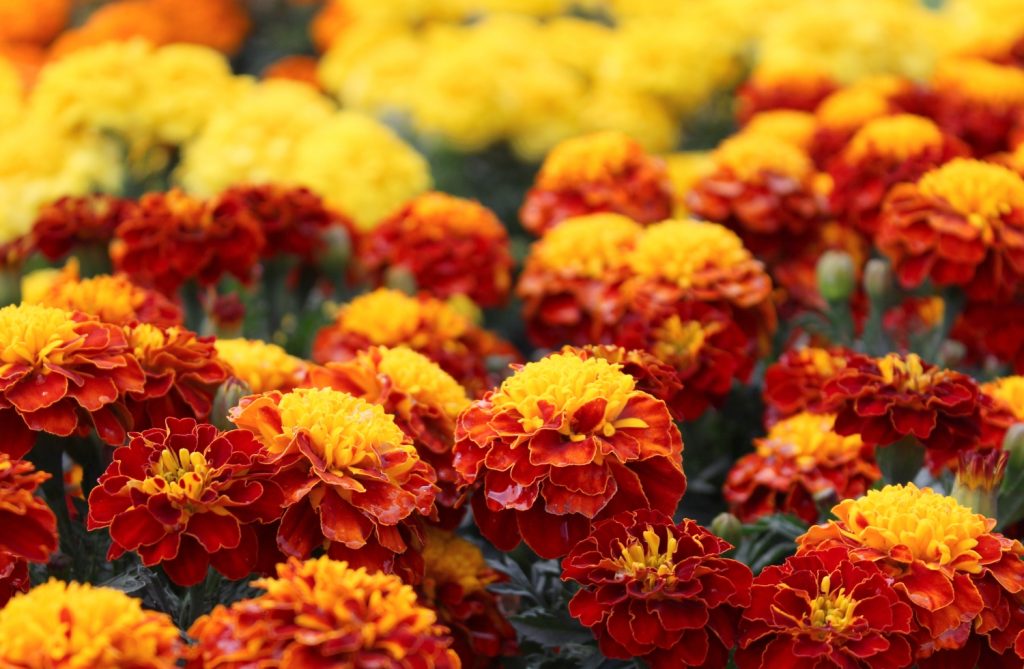
Kale
If romaine lettuce isn’t your favorite, but you still want to include a leafy green veggie in your garden, consider growing kale, instead.
Kale makes a great pea companion plant because it protects the soil, keeping it cool and damp. It also stays low to the ground, giving your peas plenty of headroom to branch out.
Naturally, kale thrives next to peas due to the boost in nitrogen.
Kale produces denser foliage in the presence of high nitrogen, with leaves having a better flavor and texture.
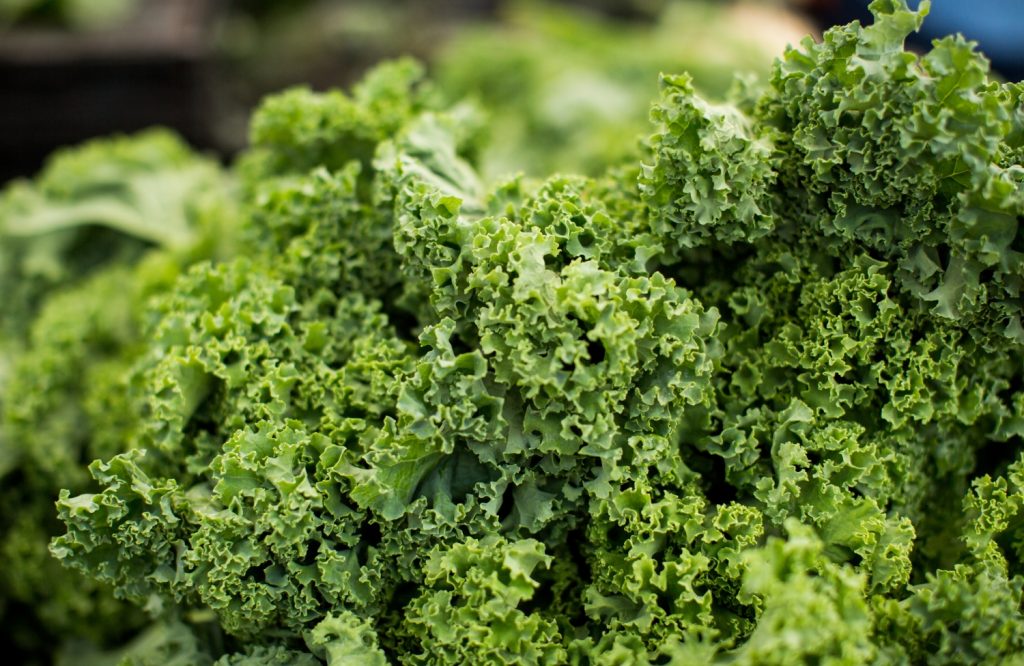
Green beans
Peas and green beans share the same light requirements and have similar growing patterns. Both plants benefit from the same types of fertilizer and regular watering schedule, too.
Because these plants are so alike, they can easily be grown together.
Try alternative pea plants and green bean plants within the same row. This allows you to make the most of trellis space and ground space.
4 Worst pea companion plants
As you can see, there are plenty of great pea companion plants to choose from.
But not all of the veggies in your garden will benefit from being planted near peas. In fact, growing these plants near your pea crop could hinder the production of both!
Alliums in particular are detrimental to peas. So when planning your garden, be sure to keep these four plants on the opposite side of your garden.
Garlic
Rich in sulfur, garlic releases compounds into the soil which inhibit the growth of surrounding plants. This naturally hinders pea development.
Garlic also has high nutrient requirements, leaching valuable vitamins and minerals from the soil, and stunting your pea crop.
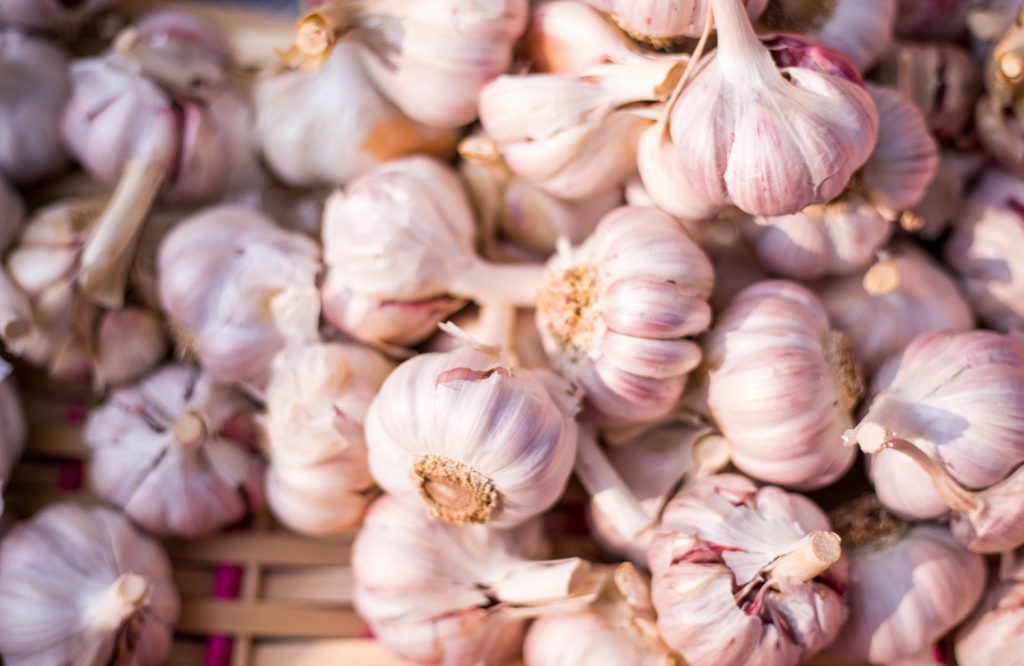
Onions
Onions, too, produce growth-inhibiting compounds that can have a detrimental effect on your pea plants.
Like other alliums, onions tend to use a lot of nutrients, leaving little leftover for peas.
Onions may also attract thrips and whiteflies to your garden, which may prey on your pea crop.
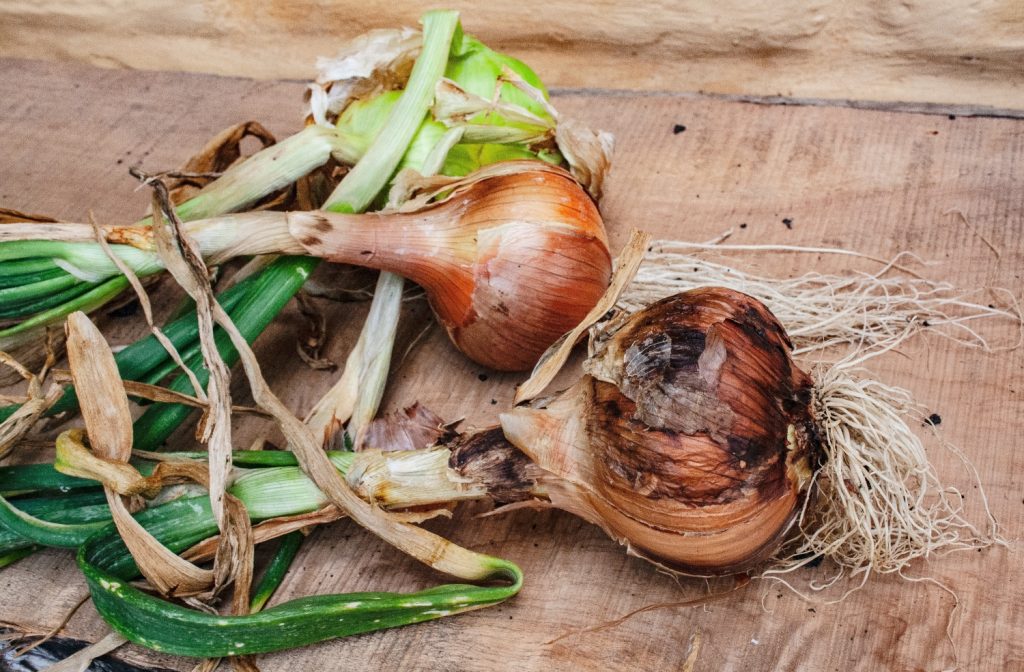
Leeks
Leeks need a lot of soil space to develop. Their shallow root systems are fast-growing, so plants often out-compete peas.
Young leek plants can grow together so tightly, they can prevent pea seedlings from reaching maturity.
So for best results, keep peas and leeks far apart.
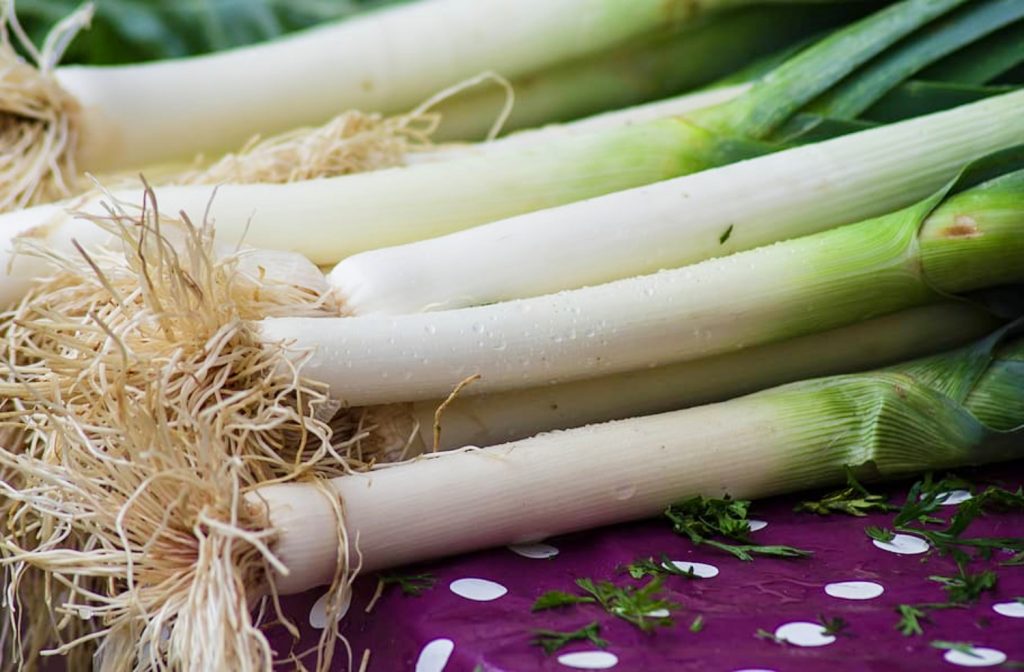
Chives
You would think that chives would work well as a pea companion plant. After all, chives can be used as a ground cover to keep the soil damp and cool.
But like other alliums, chives produce compounds designed to kill surrounding plants. They also use up the nutrients in the soil before your pea crop gets established.
To boost crop production, keep chives near their preferred companions, like tomatoes and grapes, instead.
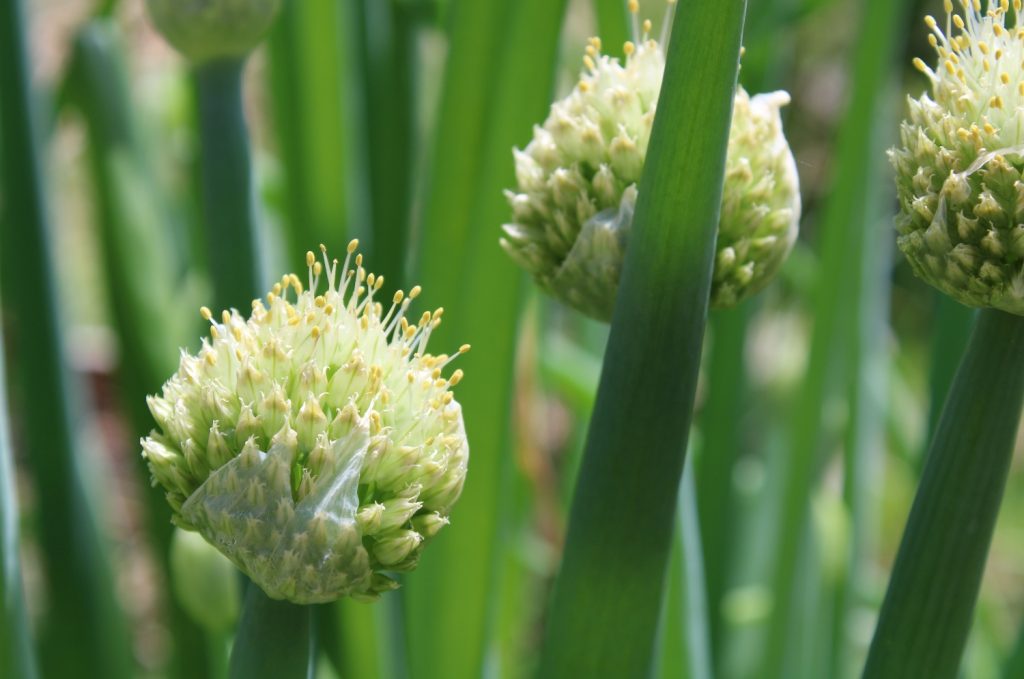
Tips for growing delicious peas
Companion planting makes growing peas easy. But there are other things you can do to grow delicious peas.
Start by meeting all of your pea’s growing requirements. Giving your peas enough sun and water is essential to crop development.
Peas have little trouble accessing nitrogen. But too much can hinder fruit production. So be sure to feed your peas a phosphorus-rich fertilizer, like bone meal, to help the plants flower and produce.
Regular care and the right companion plants can help you grow the best-tasting peas you’ve ever had.
